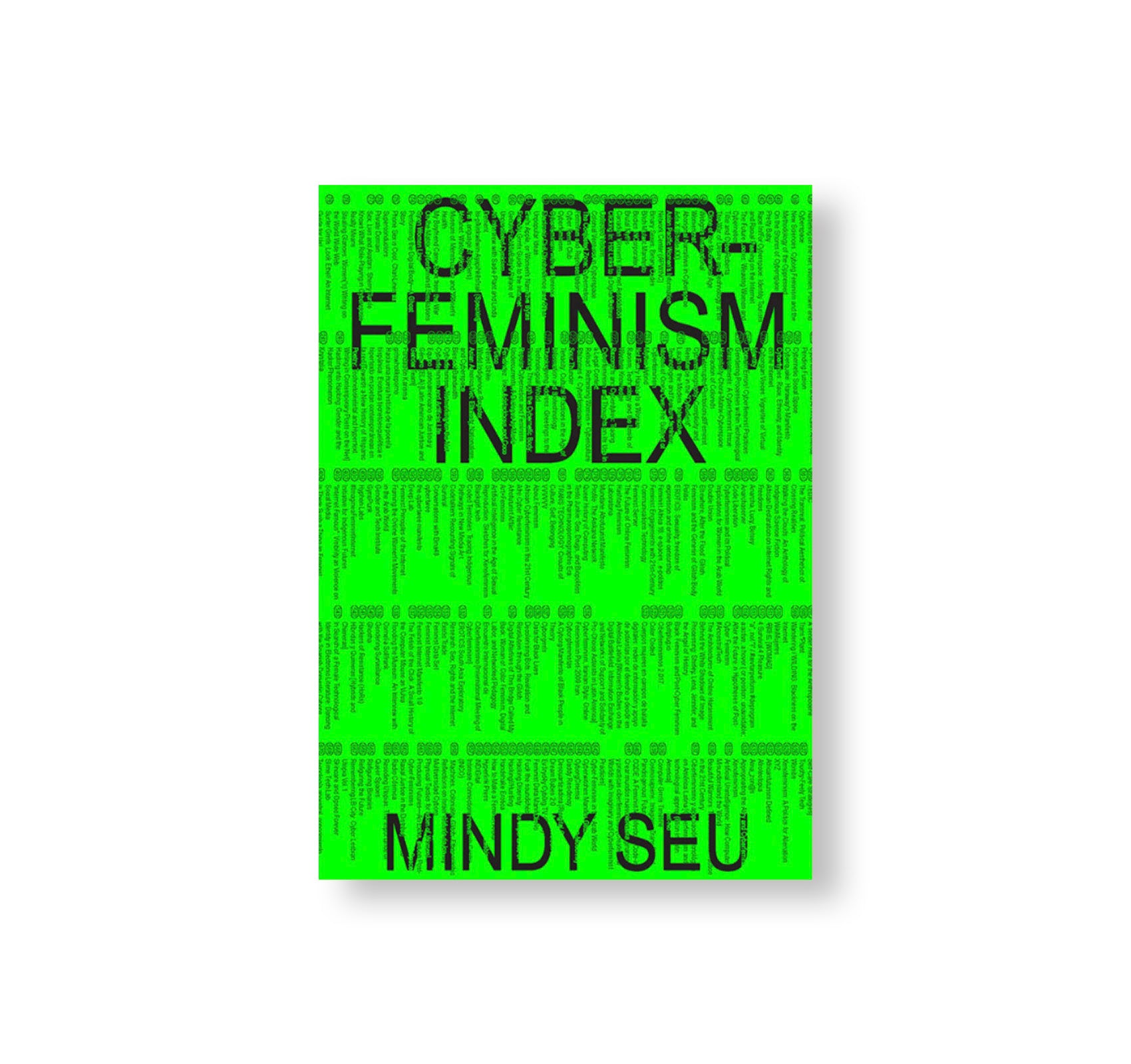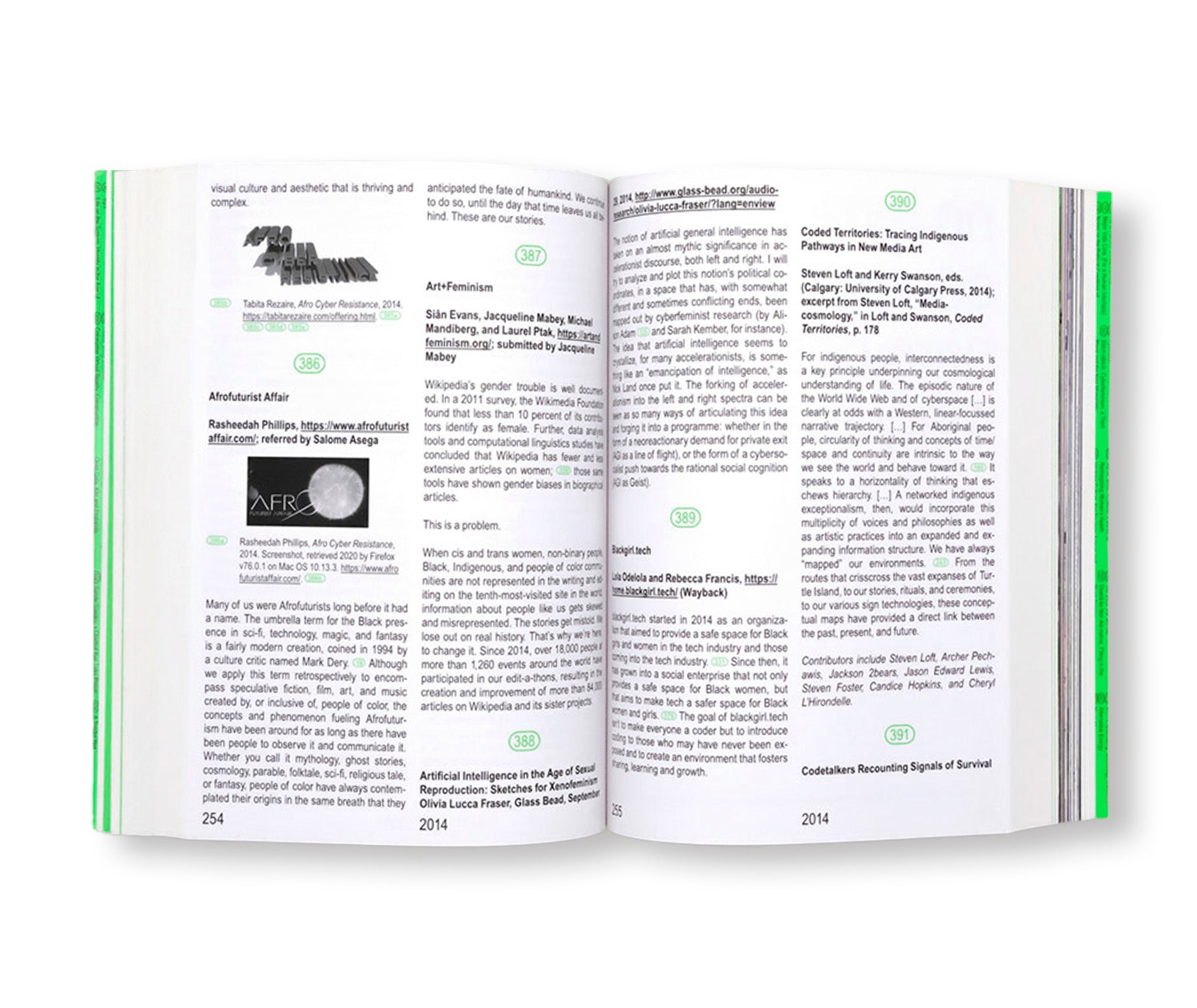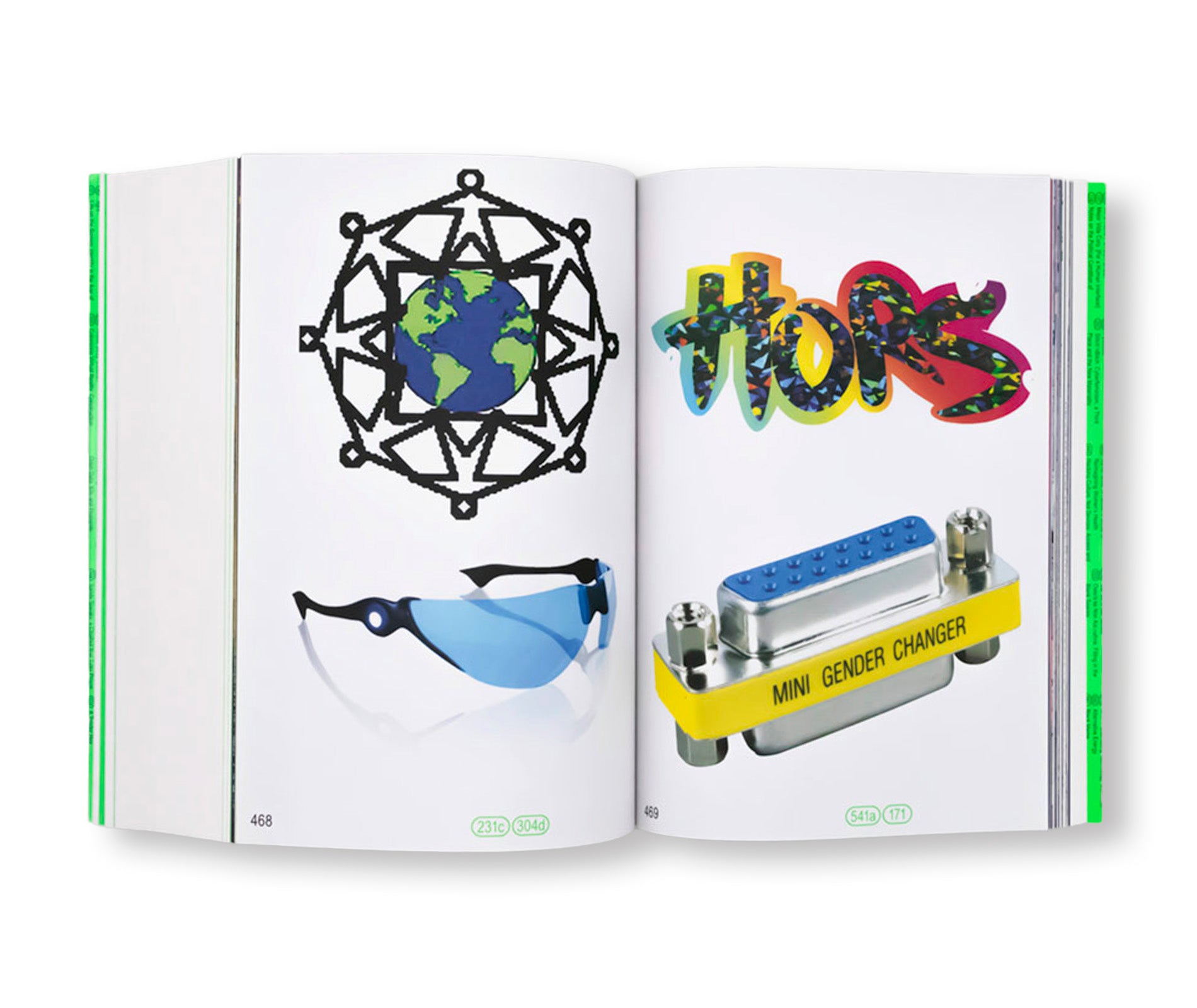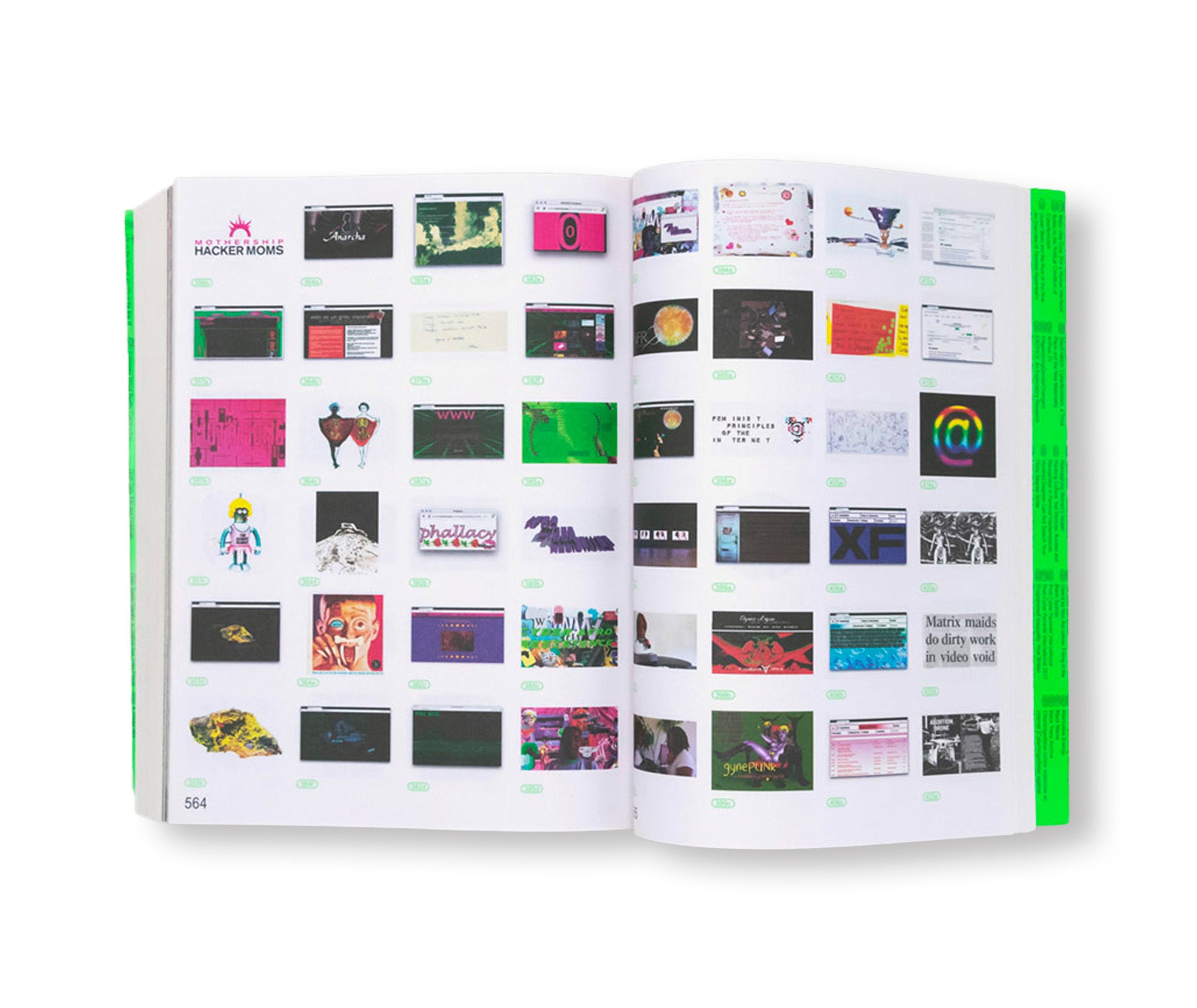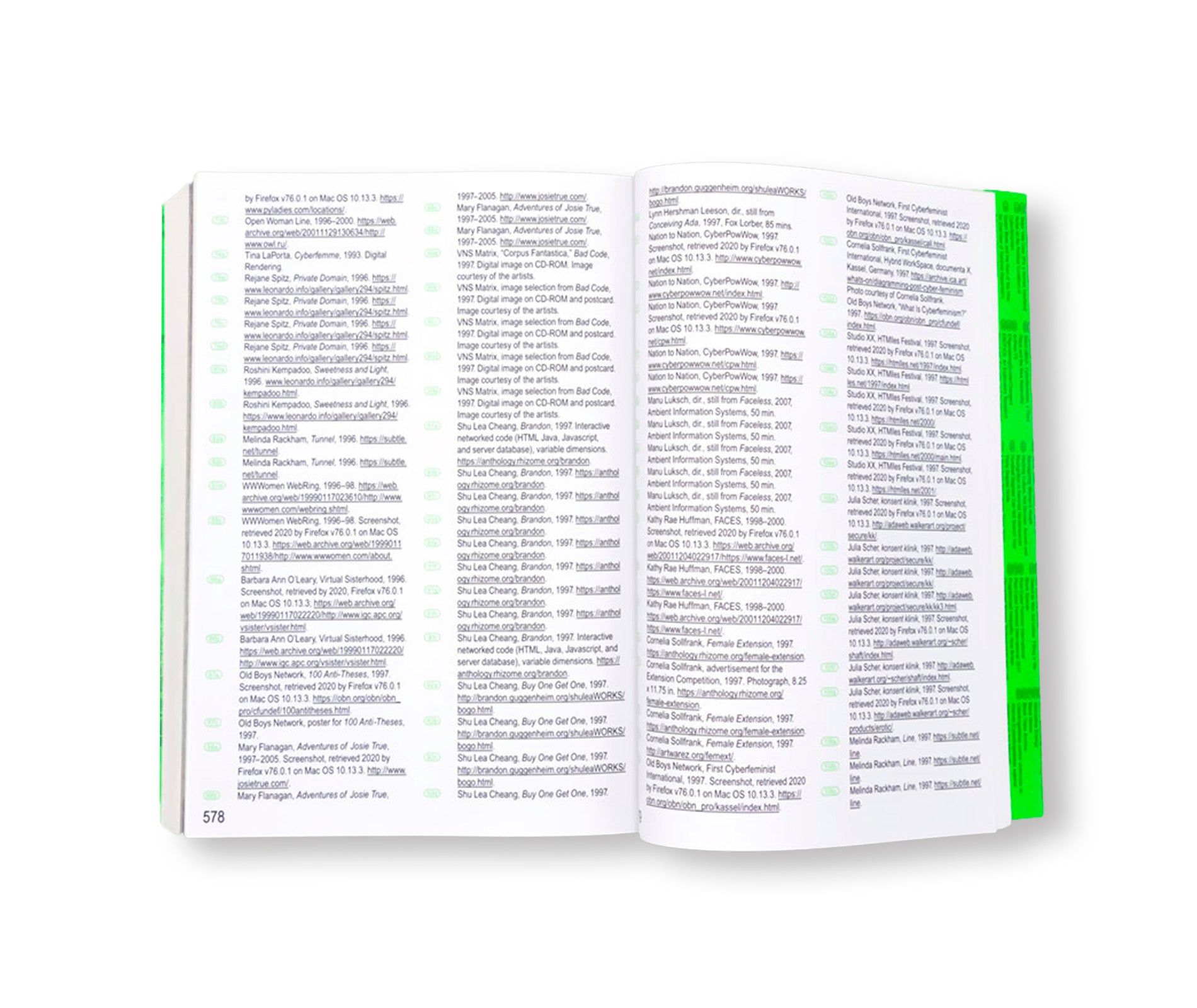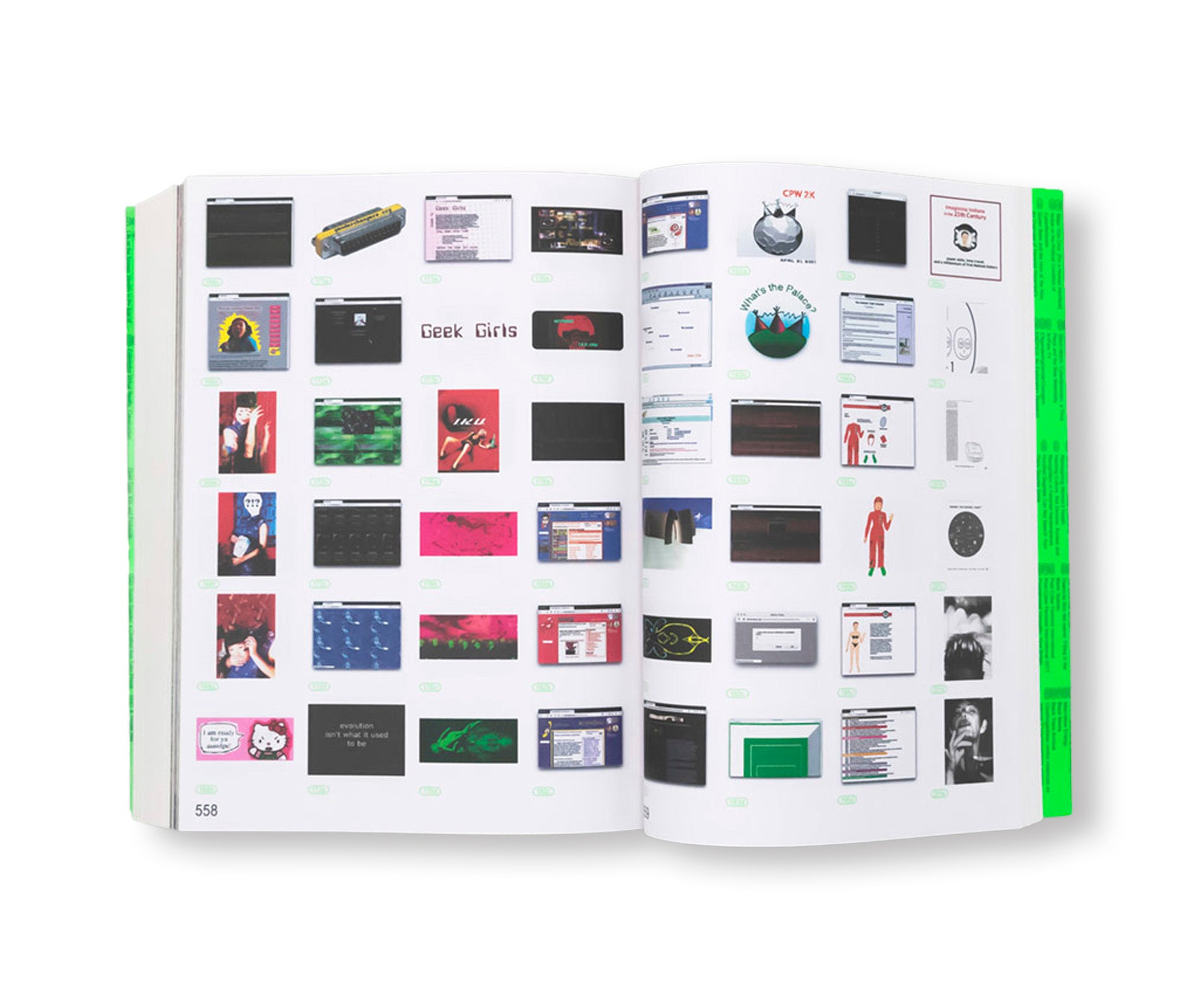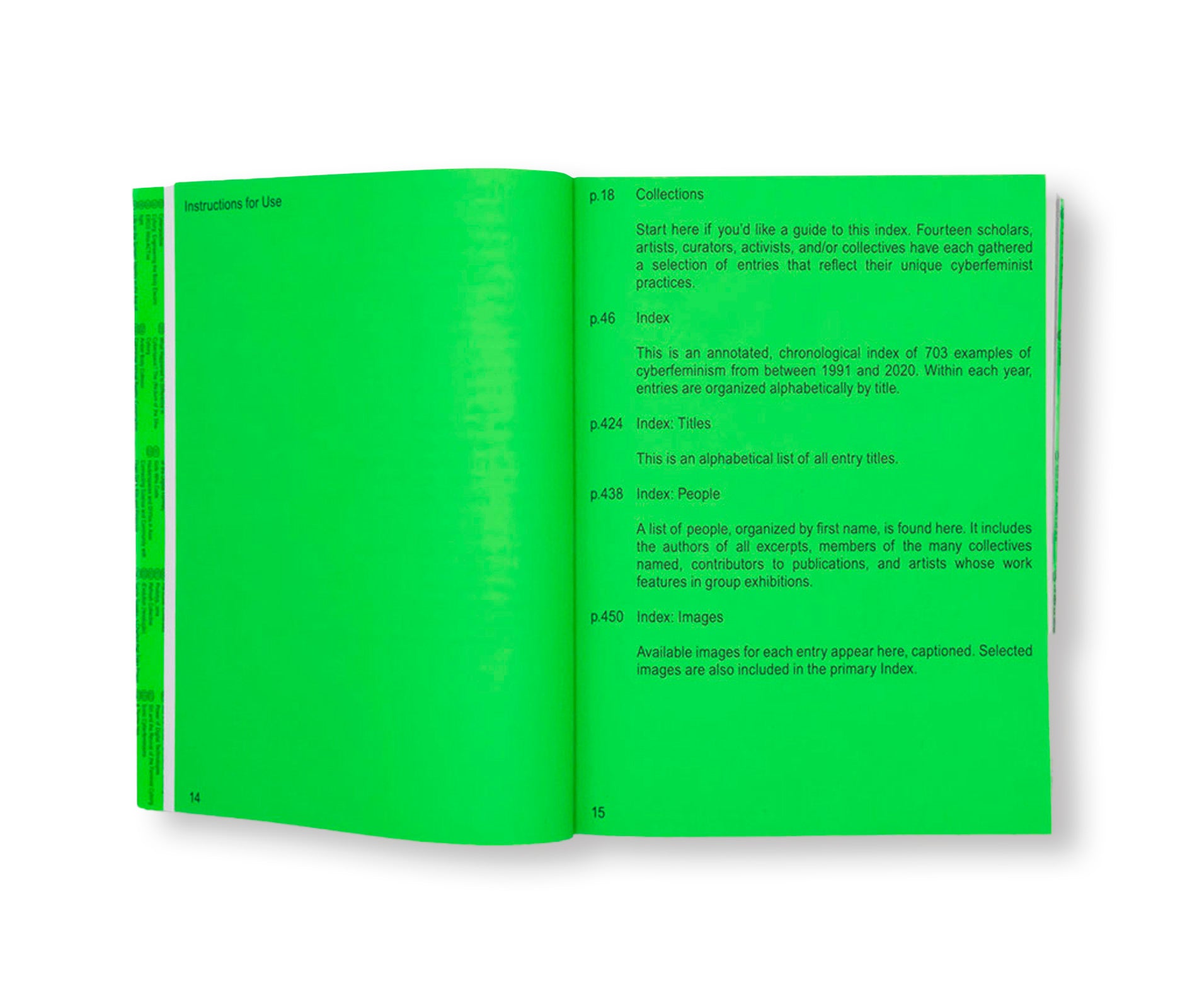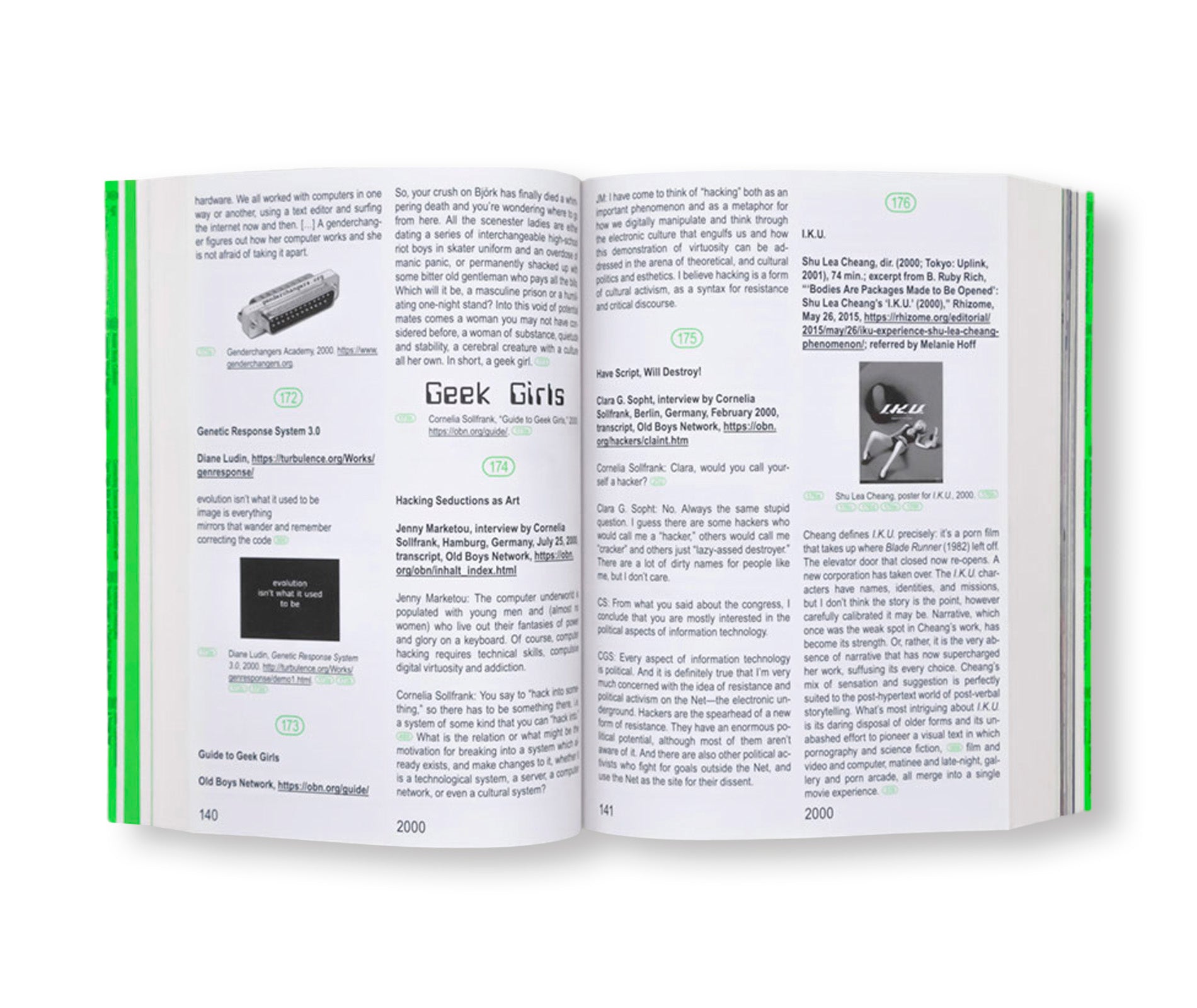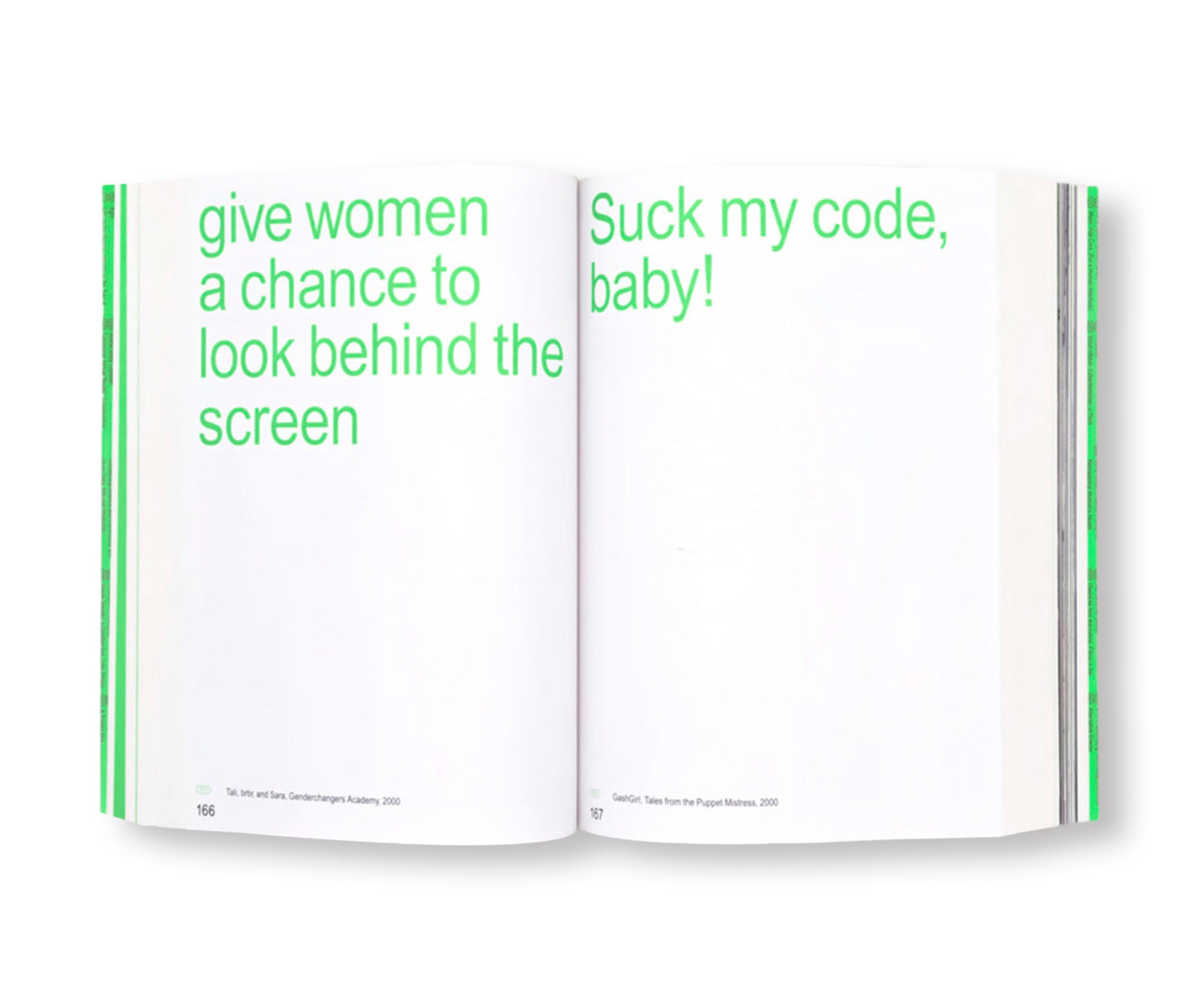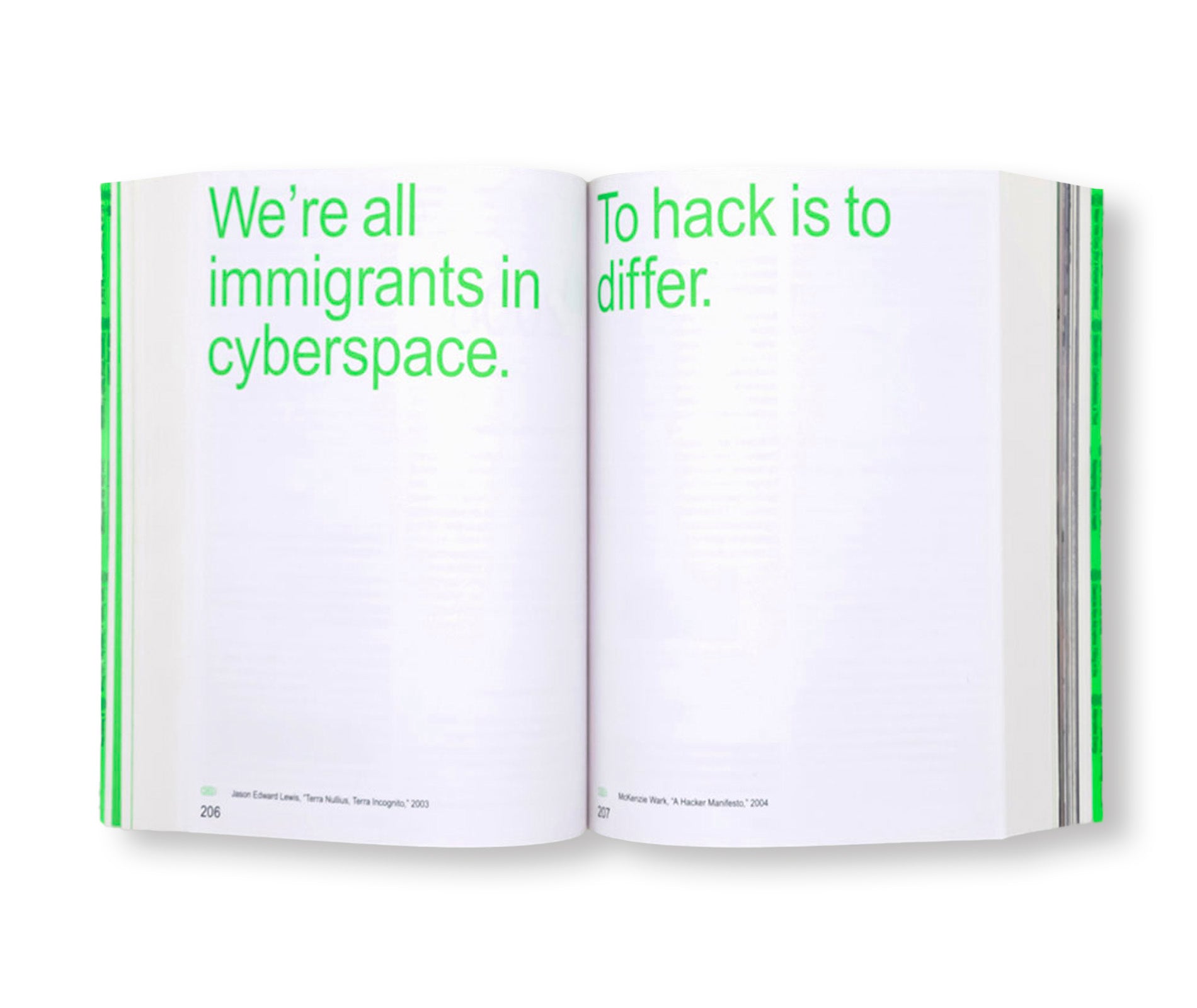CYBERFEMINISM INDEX by Mindy Seu
ニューヨークを拠点に活動するデザイナー、テクノロジストであるミンディ・セウ(Mindy Seu)の作品集。本書は、あらゆる地域、人種、性的指向におけるハッカー、学者、アーティスト、活動家たちによる、人間がテクノロジーによってどのように自己を再構築するかを考えた一冊。
インターネットの歴史を学ぶとき、我々はエンジニアリング、軍産複合体、そして建築やプロトコルを作り上げた先達に焦点を当てるよう教わるが、インターネットはケーブルやサーバー、コンピュータのネットワークに限られない。それはネット上の住人とその利用によって形作られ、そしてまた形作られる環境でもある。
本書の創造と使用は社会的かつ政治的な行為である。本書はサイバーフェミニズムという名称の傘下で、それを複雑にし、前面に出している。本書は、デザイナーであり、教授であり、リサーチャーである作者(「ハーバード・ロースクール(Harvard Law School)」の「バークマン・センター(Berkman Klein Center)」でのフェローシップ参加中に本プロジェクトを開始し、後に「ニューミュージアム(New Museum)」で発表)によって編集され、論考や学術論文の抜粋、ハッカースペースやデジタル権利活動家グループ、バイオハクティビズムに関する記述、フェミニストのネットアートやニューメディアアートの描写など、さまざまなメディアにおけるラディカルなテクノクリティカル活動に関するする700以上のエントリーが収録されている。
多くの一般の人々にとっては重要な入門書であり、教育者にとっては強力なリソース・ガイドである本書は、ある種反規範的とも言え、この「不完全な分類」という分類を行う多様な実践を讃え、長らく放置されてきたサイバーフェミニズムの起源とその広大な遺産を可視化している。
コントリビューター:
スカウェンナティ(Skawennati)、シャーロット・ウェブ(Charlotte Web)、メラニー・ホフ(Melanie Hoff)、コンスタンザ・ピナ(Constanza Pina)、メリッサ・アギラール(Melissa Aguilar)、コーネリア・ソルフランク(Cornelia Sollfrank)、パオラ・リカウル・キハノ(Paola Ricaurte Quijano)、メアリー・マジック(Mary Maggic)、ニーマ・ギテレ(Neema Githere)、ヘレン・ヘスター(Helen Hester)、アニー・ゴー(Annie Goh)、VNSマトリックス(VNS Matrix)、クラウ・チンチェ/クラウ・キンキー(Klau Chinche / Klau Kinky)、イリーナ・アリスタルホワ(Irina Aristarkhova)
In Cyberfeminism Index, hackers, scholars, artists, and activists of all regions, races and sexual orientations consider how humans might reconstruct themselves by way of technology. When learning about internet history, we are taught to focus on engineering, the military-industrial complex, and the grandfathers who created the architecture and protocol, but the internet is not only a network of cables, servers, and computers. It is an environment that shapes and is shaped by its inhabitants and their use.
The creation and use of the Cyberfeminism Index is a social and political act. It takes the name cyberfeminism as an umbrella, complicates it, and pushes it into plain sight. Edited by designer, professor, and researcher Mindy Seu, it includes more than 700 short entries of radical techno-critical activism in a variety of media, including excerpts from academic articles and scholarly texts; descriptions of hackerspaces, digital rights activist groups, and bio-hacktivism; and depictions of feminist net art and new media art.
Both a vital introduction for laypeople and a robust resource guide for educators, Cyberfeminism Index—an anti-canon, of sorts—celebrates the multiplicity of practices that fall under this imperfect categorization and makes visible cyberfeminism’s long-ignored origins and its expansive legacy.
Contributors include: Skawennati, Charlotte Web, Melanie Hoff, Constanza Pina, Melissa Aguilar, Cornelia Sollfrank, Paola Ricaurte Quijano, Mary Maggic, Neema Githere, Helen Hester, Annie Goh, VNS Matrix, Klau Chinche / Klau Kinky and Irina Aristarkhova.
